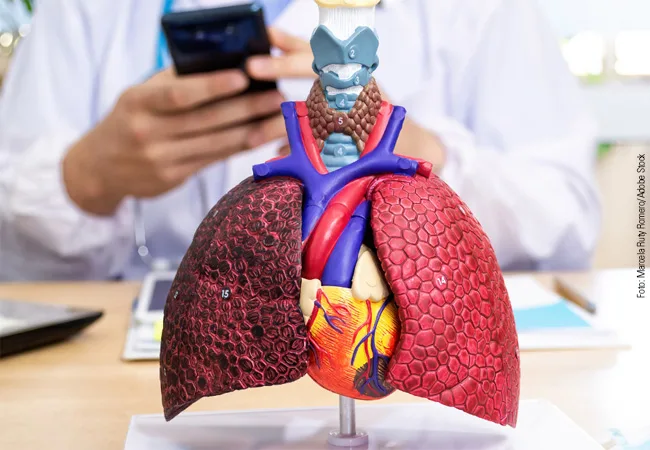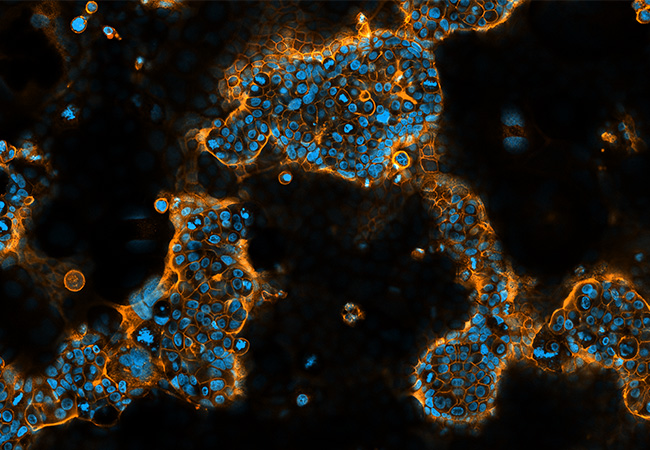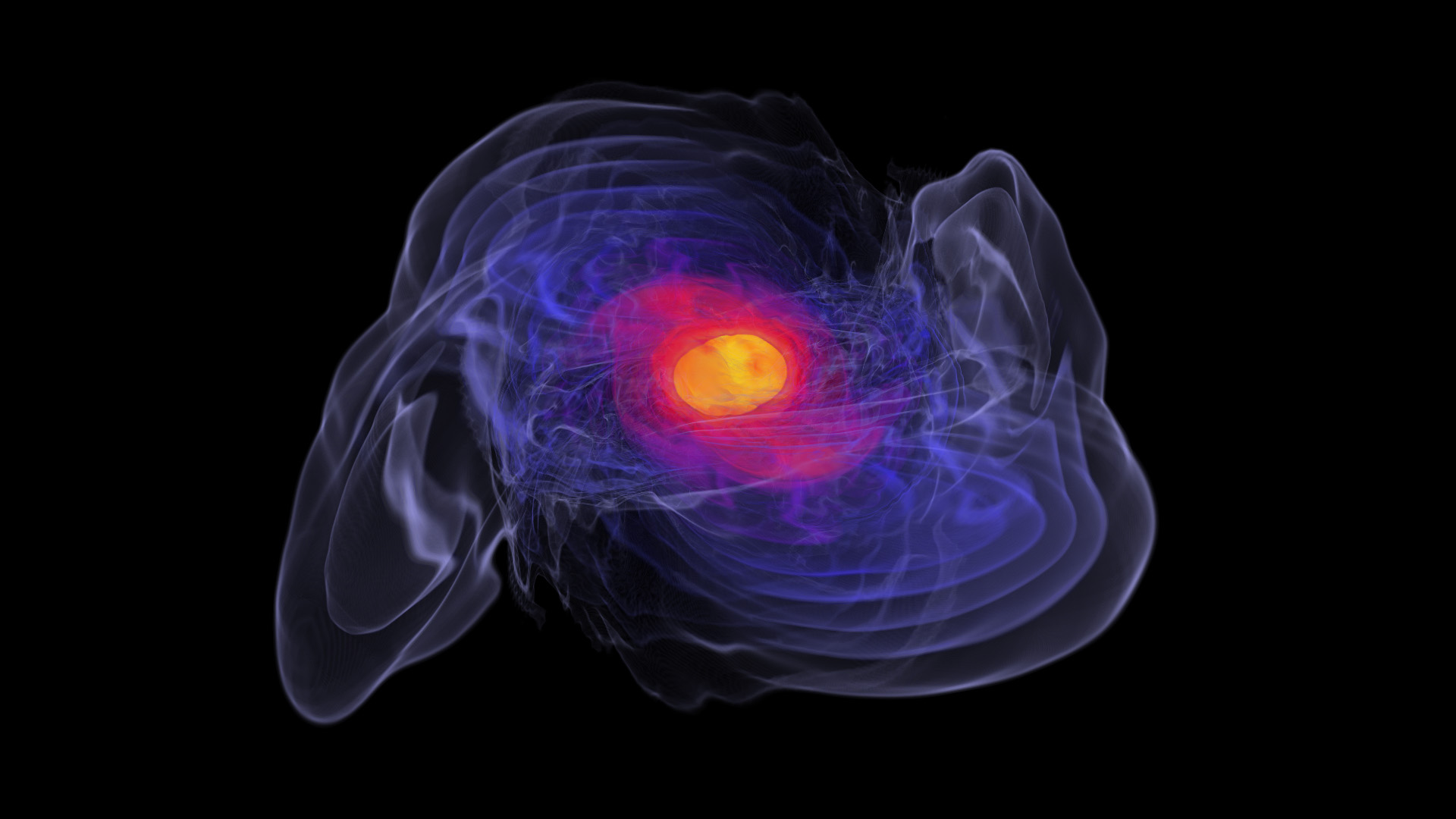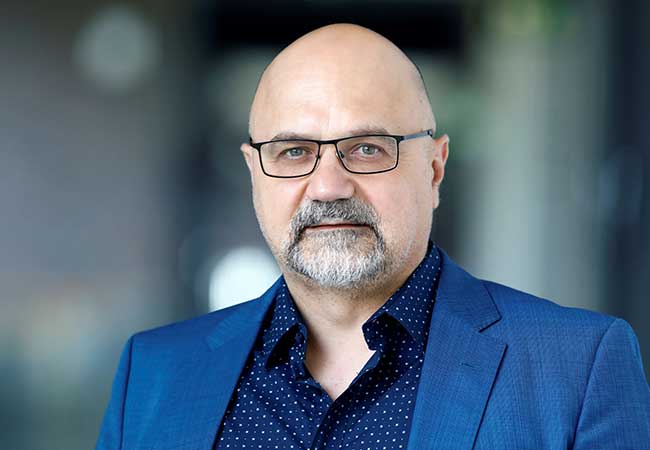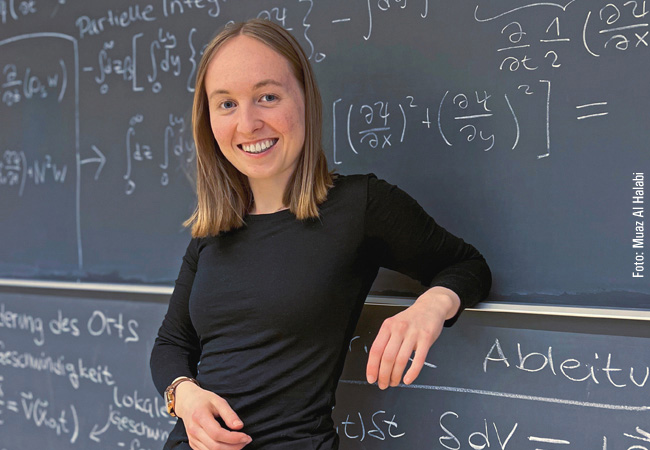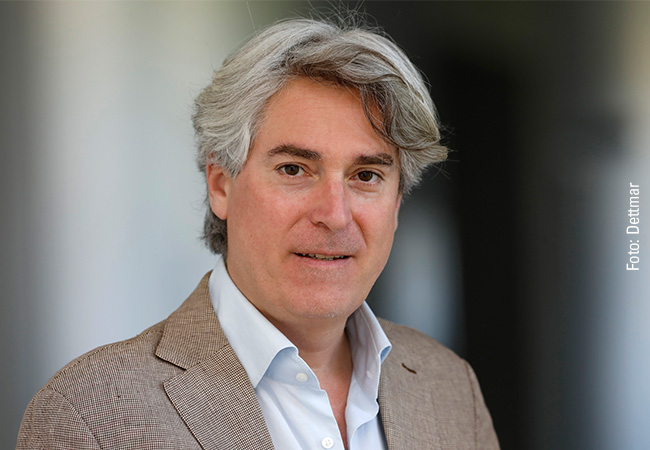The name of the cluster initiative SCALE stands for “SubCellular Architecture of LifE”. The project is entering the German federal and state governments’ Excellence Strategy as one of Goethe University Frankfurt’s applications. In doing so, the initiators of SCALE deliberately want to build on an established strength of researchers at the university’s Riedberg Campus.
“We have great expertise in the structural elucidation of RNA and membrane protein complexes, and want to build on this successful research with SCALE,” emphasizes biology professor Michaela Müller-McNicoll, who serves as SCALE cluster spokesperson together with biochemistry professor Inga Hänelt, and Martin Beck, director of the Max Planck Institute of Biophysics. The interdisciplinary approach is particularly important for the success of SCALE, and the cluster initiative also involves the Frankfurt Institute of Advanced Studies (FIAS) as well as the Max Planck Institute for Brain Research, among others: “Many of the institutes situated on Riedberg Campus work together in SCALE,” says Müller-McNicoll.
A cell is (like) a house
The biologist explains SCALE’s focus through use of an image: “Metaphorically speaking, you can imagine a cell like a house, where you can find a kitchen, a bathroom, a living room, a bedroom, and maybe even a storage room. At the same time, the cell also consists of different compartments or organelles, such as a nucleus, mitochondria, ribosomes, and synapses – in other words, contacts between nerve cells. The rooms of a house are surrounded by walls, which are in a way made permeable through doors or windows, where something can be brought in and out.” Beyond that, a house also contains moveable objects, she continues, adding that a room divider or a chair, for instance, could be moved from one corner to another. The cell also has certain dynamic architectural elements that can be formed or dismantled again, given the circumstances. Together, Müller-McNicoll, Hänelt, Beck and the other researchers involved in SCALE want to structurally characterize the cell’s existing building elements, measure changes in the inventory, and find out how the various building blocks combine to form larger functional units. In the long term, the focus will be on the questions of whether in situations of stress, cells react with “architectural changes”, and what the effects of such a reaction are, both in the individual cell, as well as in the surrounding tissue.
Observing subcellular architecture in cells at higher resolution has only become possible thanks to recent technological advances: “The fact that cryo-electron microscopy [cryo-EM], i.e. electron microscopy at almost minus 200 degrees Celsius, has made enormous progress in recent years benefits our cluster enormously,” explains Müller-McNicoll. “What started with the ability to determine purified protein complexes with high resolution, has evolved into tomograms with a high resolution that can now be used to characterize three-dimensional structures within cells, i.e. in their native environment.” Combined with high-resolution light microscopy and omics techniques – which can be used, for instance, to determine the totality of all proteins within an organelle or even an entire cell and their interactions with each other – this results in a very detailed insight into the structure and dynamics of subcellular architectures, Müller-McNicoll enthuses. She is certain that SCALE will not only benefit from recent technological advances: “It is also important for us to develop new experimental approaches with which we can continue to make invisible subcellular architecture visible.”
Digital models
Müller-McNicoll explains two of SCALE’s goals: “On the one hand, by integrating a wide variety of experimental data from the SCALE consortium, we want to create dynamic computer-generated 4D models of cellular segments. In so doing, we hope to understand the principles by which certain cellular architectures form and maintain themselves, and predict with which ‘remodeling measures’ the cell responds to stress, such as mechanical stress or a bacterial infection, for instance.” In the long term, the scientists hope that SCALE will contribute to understanding diseases (and ultimately also to the development of new cures) associated with pathological changes in subcellular architecture. “Our second goal,” Müller-McNicoll adds, “is to recreate and modify cellular segments to test whether we have truly understood the principles underlying assembly and disassembly processes that we previously explored. It may even turn out that such synthetic organelles could perform new functions and produce designer molecules.” Although SCALE researchers initially plan to focus on computer models of individual cell segments to simulate essential parts and processes, the longer-term goal is to combine these models, thereby in a way creating a digital image of an entire cell – or at least of its most important components. “This digital image will allow not only SCALE researchers, but also the scientifically interested public, to immerse themselves in the cell. So research at SCALE is not about observing individual, isolated machines at work, but about understanding entire processes that take place in three-dimensional spaces and influence cellular architecture. Such a model could shed light on how mitochondria, the cell’s power plants, adapt to a cell’s energy needs, and what happens when this adaptation is prevented by drugs or mutations – all without having to conduct the relevant experiments,” Müller-McNicoll explains, adding that, “This is a vision of the future, and one we want to work toward.”
Stefanie Hense and Dirk Frank
Website: https://scale-frankfurt.org/
Let’s do it: Goethe University Frankfurt submits four new and one existing research cluster to the Excellence Strategy competition
Goethe University Frankfurt is applying for the upcoming round of the German federal and state governments’ Excellence Strategy with four new clusters on the research topics Confidence in Conflict (CONTRUST), Infection and Inflammation (EMTHERA), Origin of Heavy Elements (ELEMENTS), and Cellular Architectures (SCALE). The applications combine Goethe University’s competencies and forward-looking ideas with those of colleagues from the strategic alliance of Rhine-Main Universities (RMU) and other partners from the four major non-university research organizations. The Cardio-Pulmonary Institute (CPI) Cluster of Excellence, in existence since 2019, will submit a full proposal directly in 2024.
An introduction to the clusters follows below.
Heart and lung disease: Cardio-Pulmonary Institute (CPI)
Heart and lung diseases are one of the leading causes of death worldwide. The Cardio-Pulmonary Institute (CPI) is dedicated to…
Infection and inflammation: EMTHERA
Developing new therapeutic approaches for complex diseases: The EMTHERA initiative is applying to become a Cluster of Excellence. The so-called cytokine…
Cellular Architectures: SCALE
The name of the cluster initiative SCALE stands for “SubCellular Architecture of LifE”. The project is entering the German federal…
Trust in Conflict: CONTRUST
How dissonance in conflict can dissolve into trust: The ConTrust cluster project explores where such potential can be found, even…
Origin of Heavy Chemical Elements: ELEMENTS
To understand why heavy elements exist in our universe, you have to explore neutron stars, kilonovas and gravitational waves. The…
Questions for ELEMENTS spokesperson Prof. Luciano Rezzolla
UniReport: What is your goal in applying for funding as a cluster of excellence? Luciano Rezzolla: The goal shared by all…




